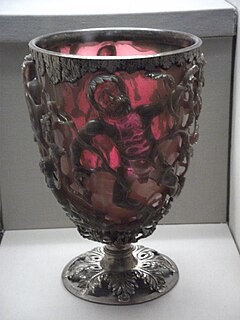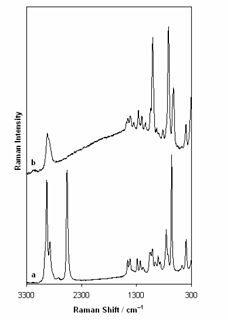 W
WA hybrid plasmonic waveguide is an optical waveguide that achieves strong light confinement by coupling the light guided by a dielectric waveguide and a plasmonic waveguide. It is formed by separating a medium of high refractive index from a metal surface by a small gap.
 W
WA localized surface plasmon (LSP) is the result of the confinement of a surface plasmon in a nanoparticle of size comparable to or smaller than the wavelength of light used to excite the plasmon. When a small spherical metallic nanoparticle is irradiated by light, the oscillating electric field causes the conduction electrons to oscillate coherently. When the electron cloud is displaced relative to its original position, a restoring force arises from Coulombic attraction between electrons and nuclei. This force causes the electron cloud to oscillate. The oscillation frequency is determined by the density of electrons, the effective electron mass, and the size and shape of the charge distribution. The LSP has two important effects: electric fields near the particle's surface are greatly enhanced and the particle's optical absorption has a maximum at the plasmon resonant frequency. Surface plasmon resonance can also be tuned based on the shape of the nanoparticle. The plasmon frequency can be related to the metal dielectric constant. The enhancement falls off quickly with distance from the surface and, for noble metal nanoparticles, the resonance occurs at visible wavelengths. Localized surface plasmon resonance creates brilliant colors in metal colloidal solutions.
 W
WThe Lycurgus Cup is a 4th-century Roman glass cage cup made of a dichroic glass, which shows a different colour depending on whether or not light is passing through it: red when lit from behind and green when lit from in front. It is the only complete Roman glass object made from this type of glass, and the one exhibiting the most impressive change in colour; it has been described as "the most spectacular glass of the period, fittingly decorated, which we know to have existed".
 W
WIn physics, a plasmon is a quantum of plasma oscillation. Just as light consists of photons, the plasma oscillation consists of plasmons. The plasmon can be considered as a quasiparticle since it arises from the quantization of plasma oscillations, just like phonons are quantizations of mechanical vibrations. Thus, plasmons are collective oscillations of the free electron gas density. For example, at optical frequencies, plasmons can couple with a photon to create another quasiparticle called a plasmon polariton.
 W
WPlasmonic nanoparticles are particles whose electron density can couple with electromagnetic radiation of wavelengths that are far larger than the particle due to the nature of the dielectric-metal interface between the medium and the particles: unlike in a pure metal where there is a maximum limit on what size wavelength can be effectively coupled based on the material size.
 W
WSpreeta is an electro-optical device utilizing surface plasmon resonance to detect small changes in refractive index of liquids. The Spreeta device was developed by Texas Instruments, Inc. in the 1990s. Device design incorporates a light-emitting diode (LED) illuminating a thin metal film in the Kretchmann geometry. The reflected light is detected by a photodiode linear array and the resonance denotes the refractive index on the outer surface of the metal film. Applications include real-time measurement of binding of antigens to antibodies attached to the sensor surface, monitoring changes in oil quality, and measuring sugar content in drinks.
 W
WSurface plasmons (SPs) are coherent delocalized electron oscillations that exist at the interface between any two materials where the real part of the dielectric function changes sign across the interface. SPs have lower energy than bulk plasmons which quantise the longitudinal electron oscillations about positive ion cores within the bulk of an electron gas.
 W
WSurface plasmon polaritons (SPPs) are electromagnetic waves that travel along a metal–dielectric or metal–air interface, practically in the infrared or visible-frequency. The term "surface plasmon polariton" explains that the wave involves both charge motion in the metal and electromagnetic waves in the air or dielectric ("polariton").
 W
WSurface plasmon resonance (SPR) is the resonant oscillation of conduction electrons at the interface between negative and positive permittivity material stimulated by incident light. SPR is the basis of many standard tools for measuring adsorption of material onto planar metal surfaces or onto the surface of metal nanoparticles. It is the fundamental principle behind many color-based biosensor applications, different lab-on-a-chip sensors and diatom photosynthesis.
 W
WSurface-enhanced Raman spectroscopy or surface-enhanced Raman scattering (SERS) is a surface-sensitive technique that enhances Raman scattering by molecules adsorbed on rough metal surfaces or by nanostructures such as plasmonic-magnetic silica nanotubes. The enhancement factor can be as much as 1010 to 1011, which means the technique may detect single molecules.